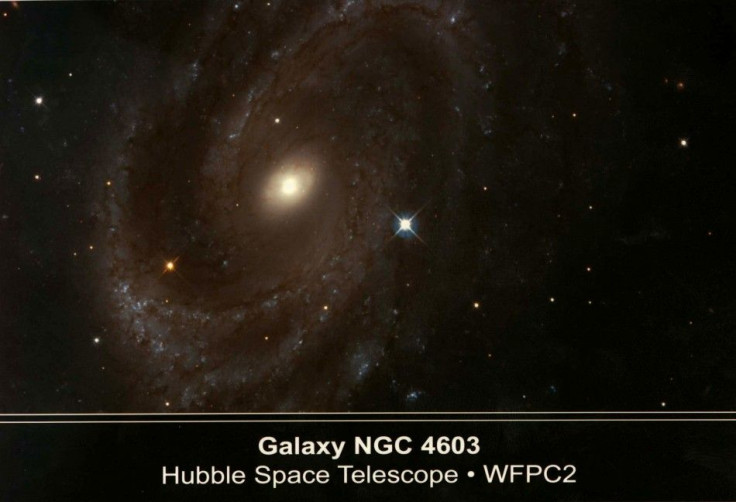Hubble Space Telescope Turns 22: Five Facts You May Not Know, Astonishing Pictures Through The Years [VIDEO]

On Tuesday, astronomers celebrated the 22nd birthday of the Hubble Space Telescope, marking over two decades of cosmic discoveries and insights. Space engineers launched the iconic telescope on April 24, 1990 on the Space Shuttle Discovery that became the largest and most sensitive optical-light telescope ever launched into space. Over 22 years, the device has produced some of the most amazing astronomical images the world has seen.
The Hubble Space Telescope remains as prominent as ever. As the telescope entered its 22nd year, a new galactic image from the device surfaced. NASA featured a photo displaying a cosmic dust-filled landscape on its website on Thursday. The sparkling stars shown in the photo are part of a young stellar grouping in a region known as the Large Magellanic Cloud, which is a neighboring dwarf galaxy of the Milky Way, according to Space.com.
In celebration of the Hubble Space Telescope's 22nd birthday, here are five things you may not have known about the space image capturing device, courtesy of Discover Magazine:
1. Hubble is responsible for the deepest visible light image to date. In 2003, astronomer Tom Brown aimed the Hubble at the outer borders of the Andromeda Galaxy, reported Discover Magazine. Brown was able to use the advanced camera featured on the telescope for his surveys, and commanded the device to focus on one spot for a total of three and a half days.
2. The moon isn't too bright to see with Hubble. Some may claim that certain objects are too bright to be seen with Hubble, but this isn't true for the moon. Most of the telescope's cameras are able to capture some of the brightest objects in the skies, although certain cameras are sensitive to ultraviolet light.
3. Hubble once observed the sun. Astronomer Glenn Schneider used electronic detectors in which extra electrons get trapped. One way to flush out these particles is to flood the detector with ultraviolet light, which is what the sun's abundant source of UV rays have been used for. Schneider's website includes the full story and some astonishing images that resulted from the channeled rays.
4. Hubble has observed every planet in the solar system except for Mercury. This planet never gets far enough for the sun for the Hubble to observe it, since the telescope cannot be pointed directly at the Sun. At most Mercury is 28 degrees from the sun, which is still far too close to be seen by Hubble.
5. Hubble doesn't use lenses. The truth is, the iconic telescope uses mirrors, not lenses. Mirrors have certain advantages that lenses don't, such as mirrors only need to be grounded on one side, while lenses have two. Mirrors can also be made larger than lenses because they can be supported all across their back side.
The Hubble Telescope certainly has captured some breath-taking footage over the past 22 years. NASA and the European Space Agency compiled a video of some of the most amazing space images captured since the Hubble's existence. Check it out below.
© Copyright IBTimes 2024. All rights reserved.






















